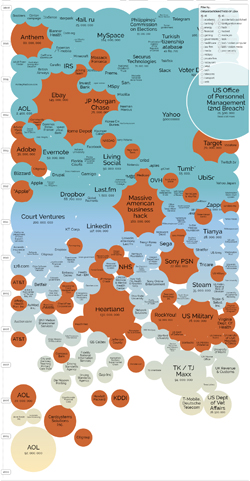Hacker Writes Trojan For Apple’s Mac
 As Apple’s popularity continues to increase, so too does the malicious interest of hackers in their famed products. Researchers at Sophos say they’ve uncovered a new Trojan horse program written for the Mac.
As Apple’s popularity continues to increase, so too does the malicious interest of hackers in their famed products. Researchers at Sophos say they’ve uncovered a new Trojan horse program written for the Mac.
It’s called the BlackHole RAT (the RAT part is for “remote access Trojan”) and it’s pretty easy to find online in hacking forums, according to Chet Wisniewski a researcher with antivirus vendor Sophos. There’s even a YouTube video demo of the program that details what its capable of doing.
Sophos hasn’t seen the Trojan used in any online attacks -it’s more a bare-bones, proof-of-concept beta program right now – but the software is pretty easy to use, and if a criminal could find a way to get a Mac user to install it, or write attack code that would silently install it on the Mac, it would give him remote control of the hacked machine. Read More….
Mobile Phone Security Threats On The Rise
February 11, 2011 by admin
Filed under Smartphones
Comments Off on Mobile Phone Security Threats On The Rise
 Mobile phone security threats rose sharply last year as the growing popularity of Internet-enabled mobile devices like smartphones and tablets provided new opportunities for cybercriminals, security software maker McAfee said.
Mobile phone security threats rose sharply last year as the growing popularity of Internet-enabled mobile devices like smartphones and tablets provided new opportunities for cybercriminals, security software maker McAfee said.
In its fourth-quarter threat report, released on today, McAfee said the number of pieces of new cellphone malware it found in 2010 rose 46 percent over 2009’s level.
“As more users access the Internet from an ever-expanding pool of devices -computer, tablet, smartphone or Internet TV- web-based threats will continue to grow in size and sophistication,” it said.
McAfee, which is being acquired by Intel for $7.68 billion, said it expected PDF and Flash maker Adobe to remain a favorite of cybercriminals this year, after it surpassed Microsoft in popularity as a target in 2010.
It attributed the trend to Adobe’s greater popularity in mobile devices and non-Microsoft environments, coupled with the ongoing widespread use of PDF document files to transfer malware. Read More….








 Sign up for our Technology Newsletter
Sign up for our Technology Newsletter